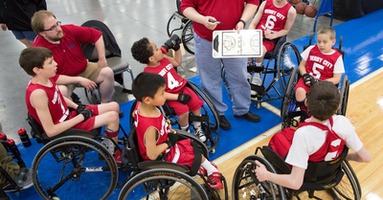
Understanding Autism Spectrum Disorder: A Parent’s Guide
Autism Spectrum Disorder (ASD) is a complex and often misunderstood neurological condition that affects how individuals communicate, behave, and interact with others. For parents, receiving an ASD diagnosis for their child can be overwhelming and filled with uncertainty. This guide aims to provide a comprehensive overview of ASD, including its signs, symptoms, challenges, and strategies for navigating life with an autistic child. By gaining a deeper understanding of ASD, parents can better support their child’s development and well-being.
What is Autism Spectrum Disorder?
Autism Spectrum Disorder is a developmental disorder that affects the brain's normal development in the areas of social interaction, communication skills, and cognitive functions. It is termed a "spectrum" because it encompasses a wide range of symptoms and abilities. Some individuals with ASD may be nonverbal or have severe intellectual disabilities, while others may have high-functioning ASD with above-average intelligence and unique talents.
Prevalence of Autism
ASD is more common than many people realize. According to the Centers for Disease Control and Prevention (CDC), approximately 1 in 36 children in the United States is diagnosed with ASD. The condition is more prevalent in boys than in girls, with a ratio of about 4:1. The rising awareness and improvements in diagnostic practices have contributed to the increasing prevalence rates over the years.
The Causes of Autism
The exact cause of ASD remains unknown, but research suggests that it is likely a combination of genetic and environmental factors. Studies have identified certain genetic mutations that are associated with an increased risk of ASD. Additionally, environmental factors such as advanced parental age, prenatal exposure to certain chemicals, and complications during pregnancy or birth may contribute to the development of ASD. It's important to note that vaccines have been extensively studied and found not to be a cause of ASD.
Recognizing the Signs and Symptoms of Autism
Early detection of ASD is crucial for providing timely intervention and support. Parents should be aware of the common signs and symptoms, which can vary widely from one child to another. While some children may show clear signs in their first year of life, others may not be diagnosed until later in childhood.
Early Signs in Infants and Toddlers
- Delayed Speech Development: By 12 to 18 months, most children start to babble or say simple words. A lack of speech or babbling could be an early sign of ASD.
- Lack of Eye Contact: Infants with ASD may avoid eye contact or have difficulty maintaining it.
- Limited Social Interaction: Babies with ASD might not respond to their names, show interest in playing with others, or imitate facial expressions.
- Repetitive Behaviors: Repetitive movements such as hand-flapping, rocking, or spinning objects are common in children with ASD.
- Sensory Sensitivities: Some children may be overly sensitive to sounds, lights, textures, or other sensory inputs.
Signs in Older Children
As children grow older, the signs of ASD may become more pronounced and varied. These can include:
- Difficulty with Social Relationships: Children with ASD may struggle to form friendships, understand social cues, or engage in imaginative play with peers.
- Communication Challenges: Verbal communication can be challenging, with some children having limited speech or difficulty understanding sarcasm, jokes, or idioms.
- Restricted Interests: Many children with ASD develop intense, focused interests in specific topics, often to the exclusion of other activities.
- Routine Dependence: A strong need for routine and resistance to change is common among children with ASD.
- Unusual Patterns of Behavior: These can include repetitive actions, ritualistic behaviors, or fixations on certain objects or activities.
Variability in Symptoms
One of the defining characteristics of ASD is its variability. No two individuals with ASD are exactly alike. Some may have significant challenges in communication and social interaction, while others may excel in specific areas like math, art, or music. This variability can make diagnosing and understanding ASD particularly challenging.
Getting an Autism Diagnosis
If you suspect your child may have ASD, it’s important to seek an evaluation from a qualified professional. The diagnostic process typically involves multiple steps and may include input from various specialists, including pediatricians, psychologists, and speech-language pathologists.
The Diagnostic Process
Initial Screening: During routine well-child visits, pediatricians often conduct developmental screenings to check for early signs of ASD. If concerns arise, further evaluation is recommended.
Comprehensive Evaluation: A thorough evaluation involves detailed observation of the child’s behavior, communication, and social interactions. Standardized tests and questionnaires may be used to assess developmental milestones and identify symptoms of ASD.
Interdisciplinary Team Assessment: A team of specialists, including a developmental pediatrician, psychologist, speech therapist, and occupational therapist, may be involved in the assessment to provide a comprehensive diagnosis.
Autism Diagnosis: If the evaluation results in an ASD diagnosis, the next steps involve developing a personalized treatment plan tailored to the child's specific needs.
The Role of Early Intervention
Early intervention is critical for children with ASD. Research has shown that children who receive early and intensive intervention services are more likely to develop important skills in communication, social interaction, and adaptive behavior. Early intervention programs may include speech therapy, occupational therapy, behavioral therapy, and specialized educational programs.
Navigating the Challenges of Autism
Raising a child with ASD presents unique challenges, but with the right support and strategies, parents can help their child thrive. Understanding these challenges and how to address them is essential for creating a positive environment for your child.
Communication Challenges
Communication difficulties are a hallmark of ASD. Children with ASD may have limited verbal skills, struggle to understand nonverbal cues, or have difficulty expressing their needs and emotions.
Strategies to Support Communication
- Use Visual Supports: Visual aids, such as picture cards or communication boards, can help children express their needs and understand instructions.
- Encourage Alternative Communication Methods: For nonverbal children, augmentative and alternative communication (AAC) devices, such as speech-generating devices, can facilitate communication.
- Model Clear and Simple Language: Speak in short, clear sentences and give your child time to process and respond.
- Engage in Play-Based Communication: Play is a natural way to encourage communication. Use toys, games, and activities that your child enjoys to foster interaction.
Social Interaction and Relationships
Building social skills can be challenging for children with ASD. They may struggle to understand social norms, make friends, or engage in cooperative play.
Strategies to Support Social Development
- Social Skills Training: Enroll your child in social skills groups where they can practice interacting with peers in a structured environment.
- Role-Playing and Social Stories: Use role-playing exercises and social stories to teach your child about social cues, appropriate behaviors, and how to respond in different situations.
- Facilitate Playdates: Arrange playdates with understanding peers and provide guidance on how to interact and share during play.
- Encourage Special Interests: Use your child’s interests as a way to connect with others who share similar hobbies or passions.
Sensory Sensitivities
Many children with ASD have heightened or reduced sensitivity to sensory stimuli. This can lead to challenges in everyday environments, such as loud noises, bright lights, or certain textures.
Strategies to Manage Sensory Sensitivities
- Create a Sensory-Friendly Environment: Modify your home environment to reduce sensory overload, such as using dim lighting, minimizing noise, and providing calming spaces.
- Use Sensory Tools: Tools like noise-canceling headphones, weighted blankets, or fidget toys can help your child manage sensory sensitivities.
- Prepare for Sensory Challenges: Before entering environments with potential sensory triggers, prepare your child by discussing what to expect and using visual schedules or social stories.
- Consult an Occupational Therapist: An occupational therapist can help develop strategies to manage sensory sensitivities and improve your child’s ability to navigate different environments.
Behavioral Challenges
Children with ASD may exhibit challenging behaviors, such as meltdowns, aggression, or self-injurious behavior. These behaviors often result from frustration, communication difficulties, or sensory overload.
Strategies to Address Behavioral Challenges
- Identify Triggers: Observe your child to identify the triggers that lead to challenging behaviors, such as specific situations, sensory stimuli, or unmet needs.
- Use Positive Reinforcement: Reward positive behaviors with praise, tokens, or other incentives to encourage desired behaviors.
- Implement Behavior Plans: Work with a behavioral therapist to develop a behavior intervention plan that includes strategies for preventing and managing challenging behaviors.
- Teach Coping Skills: Help your child develop coping skills, such as deep breathing, counting to ten, or using a designated calming space when they feel overwhelmed.
Academic Challenges
Children with ASD may face difficulties in a traditional classroom setting, such as challenges with attention, social interaction, and adapting to new routines.
Strategies to Support Academic Success
- Individualized Education Program (IEP): Work with your child’s school to develop an IEP that outlines specific accommodations, modifications, and goals tailored to your child’s needs.
- Use Visual Schedules: Visual schedules can help your child understand and follow daily routines, reducing anxiety and increasing independence.
- Provide Sensory Breaks: Allow your child to take sensory breaks during the school day to help them regulate their emotions and maintain focus.
- Collaborate with Educators: Maintain open communication with your child’s teachers and support staff to ensure that they understand your child’s needs and implement appropriate strategies.
Supporting Your Child’s Development
Raising a child with ASD requires a proactive approach to supporting their development. Parents play a critical role in helping their child reach their full potential by providing a nurturing environment, accessing appropriate resources, and advocating for their child’s needs.
Building a Support System
It’s essential for parents to build a strong support system that includes family, friends, healthcare providers, educators, and other professionals. A supportive network can provide emotional support, share valuable resources, and offer guidance during challenging times.
- Join Support Groups: Connect with other parents of children with ASD through support groups, both online and in person. Sharing experiences and advice can be incredibly helpful.
- Seek Professional Guidance: Work with professionals, such as pediatricians, psychologists, and therapists, who specialize in ASD and can provide expert advice and support.
- Engage with Your Community: Participate in community events and activities designed for children with ASD and their families. This can help your child build social skills and create a sense of belonging.
Advocacy and Empowerment
As a parent, you are your child’s strongest advocate. It’s important to educate yourself about your child’s rights and the resources available to them. This includes understanding special education laws, accessing financial assistance, and advocating for appropriate services.
- Learn About Special Education Laws: Familiarize yourself with the Individuals with Disabilities Education Act (IDEA) and other relevant laws that protect the rights of children with disabilities.
- Advocate for Services: Don’t hesitate to advocate for the services and accommodations your child needs, whether in the school system, healthcare, or community programs.
- Empower Your Child: As your child grows older, involve them in decisions about their education, therapies, and daily routines. Empowering your child to advocate for themselves is a crucial step in their development.
Promoting Independence
One of the long-term goals for parents of children with ASD is to help them develop the skills needed for independence. While the path to independence may vary depending on the child’s abilities, there are several strategies that can support this goal.
- Teach Life Skills: Start teaching your child essential life skills, such as dressing, grooming, cooking, and managing money, from an early age. Break tasks down into smaller, manageable steps.
- Encourage Problem-Solving: Help your child develop problem-solving skills by guiding them through challenges and encouraging them to think critically about solutions.
- Foster Social Skills: Social skills are key to independence. Provide opportunities for your child to practice social interactions in various settings, such as school, extracurricular activities, and community events.
- Plan for the Future: As your child approaches adolescence, begin planning for their transition to adulthood. This may involve exploring vocational training, higher education, or supported employment options.
The Role of Self-Care for Parents
Caring for a child with ASD can be physically and emotionally demanding. It’s essential for parents to prioritize self-care to maintain their own well-being and be the best support system for their child.
Strategies for Self-Care
- Take Breaks: Make time for yourself by scheduling regular breaks. Whether it’s a few hours to relax, pursue a hobby, or spend time with friends, taking breaks is crucial for your mental health.
- Seek Support: Don’t hesitate to seek professional support, such as counseling or therapy, to help you manage stress and navigate the challenges of parenting a child with ASD.
- Practice Mindfulness: Incorporate mindfulness practices, such as meditation, deep breathing, or yoga, into your daily routine to reduce stress and improve emotional resilience.
- Stay Connected: Maintain connections with friends, family, and support groups who understand your experiences and can offer encouragement and understanding.
The Importance of Self-Compassion
Parenting a child with ASD can be challenging, and it’s natural to feel overwhelmed at times. Practice self-compassion by acknowledging your efforts, celebrating small victories, and being gentle with yourself when things don’t go as planned. Remember that you are doing your best, and that’s enough.
Resources for Parents
There are numerous resources available to help parents navigate the challenges of raising a child with ASD. These resources can provide valuable information, support, and guidance.
Books and Websites
- “The Autism Parenting Magazine”: Offers practical tips and advice for parents raising children with ASD.
- “The Complete Guide to Autism” by Chantal Sicile-Kira: A comprehensive guide covering all aspects of autism, including diagnosis, treatment, and daily life.
- Autism Speaks (www.autismspeaks.org): Provides information on ASD, advocacy resources, and support for families.
Organizations and Support Groups
- National Autism Association (www.nationalautismassociation.org): Offers resources and support for families affected by autism.
- The Autism Society (www.autism-society.org): Provides information, resources, and support for individuals with autism and their families.
- Local Support Groups: Many communities have local support groups for parents of children with ASD. These groups offer a space to share experiences, advice, and support.
Financial and Legal Resources
- Social Security Disability Insurance (SSDI): Provides financial assistance to individuals with disabilities, including children with ASD.
- Medicaid Waivers: Some states offer Medicaid waivers to cover the cost of services for children with ASD.
- Special Education Advocacy: Consider working with a special education advocate to ensure your child receives the services they need in school.
Conclusion
Understanding Autism Spectrum Disorder is the first step in supporting your child’s development and well-being. By recognizing the signs and symptoms, seeking early intervention, and implementing effective strategies, parents can help their child navigate the challenges of ASD and lead a fulfilling life. Remember that you are not alone on this journey—there are countless resources, professionals, and support networks available to guide you.
Navigating the complexities of ASD can be challenging, especially when it comes to ensuring your child has access to the necessary resources and accommodations. If you’re facing difficulties in getting a disabled parking permit for an autistic child, you’re not alone. Learn how to navigate the challenges of obtaining a disabled parking permit for your autistic child.
For more resources and to ensure your child gets the support they need, visit HandicapMD.com and discover how to apply for a disabled parking permit that can make daily life easier for your family.
.png)






